Going gluten-free is not just a Hollywood trend. Today, more people than ever are buying, cooking, and eating gluten-free foods. In fact, nearly one-third of Americans say they’re trying to ditch the sticky protein found in wheat, rye, and barley. You may be wondering, “Why?”
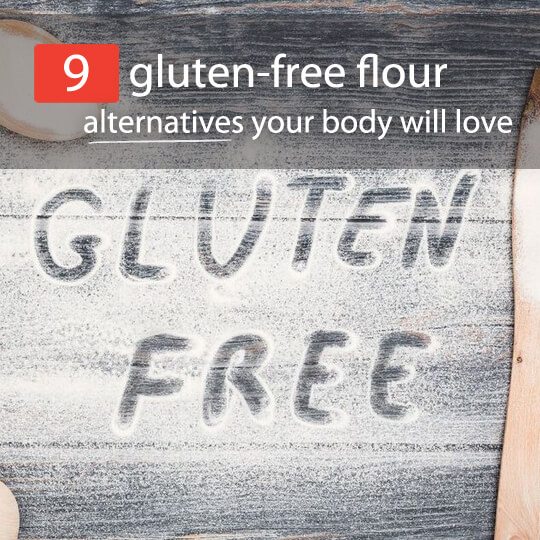
For some people, ditching gluten is necessary. Anyone who suffers from Celiac Disease or has a gluten sensitivity must avoid it like the plague for health reasons. Other people choose this lifestyle, hoping it will improve their digestion or help them drop a few pounds. No matter the reason, most people going gluten-free seem to have one big concern — “What the heck am I going to eat?”
I have some good news for you. Going gluten-free doesn’t mean you have to give up on delicious bread, muffins, brownies, or cakes. All you have to do is change up some of the ingredients. Below, I have outlined the nine best gluten-free flour alternatives and how to bake with them!
1) Coconut Flour
What Is It: This is one of the most popular gluten-free flour alternatives (and rightfully so). Since coconut flour comes from the meat of a dried coconut, this flour alternative contains the same benefits as any other coconut product on the market.
The Health Benefits: Coconut flour is high in fiber, healthy fats, and protein. That’s not to mention, it’s low in sugar and carbs. It’s very uncommon for coconut flour to cause digestive issues, like grain flours often do. Additionally, since coconut flour is a low glycemic food, it doesn’t spike blood sugar levels. In fact, eating foods that contain coconut flour have been known to stabilize blood sugar levels (just make sure you check out the other ingredients in your treat too).
Cooking Tips: Coconut flour is extremely prone to clumps. So before you add other ingredients to your mixing bowl, make sure to de-clump it.
Also, coconut flour tends to be dense, dry, and extremely absorbent. For this reason, you cannot simply replace all-purpose flour with coconut flour at a 1:1 ratio. If you do, your baked goods will more than likely come out dry and crumbly. Instead, when cooking with coconut flour, you will need to use more eggs than you normally do. A good rule of thumb is that for every 1/4 cup of coconut flour you use in a recipe, you will need to use two eggs. If you’re mixing in other dry ingredients (like cocoa powder) your egg ratio will need to go up even higher.
Recipes:
- Strawberry Shortcake Cupcakes
- Chocolate Chip Pancakes
- Coconut Flour Muffins
- Coconut Flour Bread
- Gluten-Free Chocolate Cake
2) Almond Flour
What Is It: This type of flour is great for making baked goods such as cookies, cakes, and pastries. It comes in two types – “fine ground” and “coarse ground” – and is made from ground up almonds. No wonder it has all of the same health benefits as a handful of whole almonds!
The Health Benefits: Almond flour is high in protein, has heart-healthy fats, and contains essential vitamins and minerals. Just like coconut flour, almond flour is also easier on the digestive system.
Cooking Tips: Almond flour absorbs liquid differently than grain flour does. If a recipe calls for a small amount of liquid, you may be able to do a 1:1 substitute. However, many wheat flour recipes call for more liquid than what can be reasonably absorbed by almond flour. For this reason, many times a direct substitute will leave you with a soggy product. To avoid frustration, look for a recipe that already uses almond flour (like the ones below)!
Recipes:
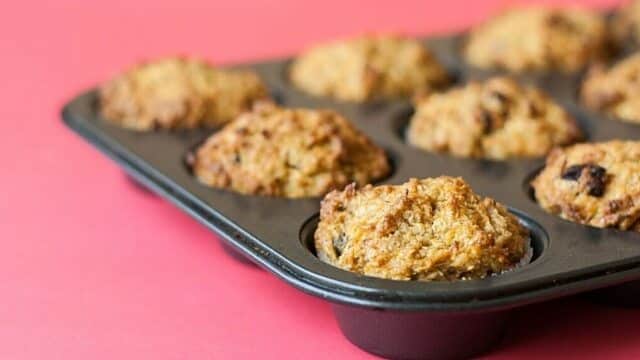
3) Hazelnut Flour
What Is It: To create organic hazelnut flour, manufacturers simply peel and grind up whole hazelnuts. This creates a crumbly flour that will add a nutty flavor and nice texture to pastries and bread.
The Health Benefits: Hazelnut is high in protein and vitamins that are known to improve brain development, reduce the risk of blood clots, and benefit cell health.
Cooking Tips: Typically, hazelnut flour isn’t used alone. Rather, it’s used in combination with other gluten-free flours to create delicious bread and pastries. Bob’s Red Mill manufacturer recommends replacing 30% of your flour with hazelnut flour. You can replace the remaining 70% with another gluten-free flour to create a flour blend. Check out some of the recipes below for ideas!
Recipes:
- Flourless Double Chocolate Hazelnut Cookies with Sea Salt
- Hazelnut Crepes
- Hazelnut Chocolate Chip Scones
- Hazelnut Plum Muffins
4) Oat Flour
What Is It: You can easily make oat flour on your own. Just take oatmeal flakes and grind them up in a blender. It will take about 1 and 1/4 cups of rolled oats to make one cup of oat flour.
A lot of people wonder if oats are truly gluten-free. Even though they are, the answer is somewhat complicated. Many times oats are grown in fields where gluten products are also grown. This means there could be cross-contamination. Fortunately, many growers today isolate their fields and manufacturing facilities. To be on the safe side, though, look for oats that are labeled “gluten-free.”
The Health Benefits: Just like oatmeal, oat flour is great for lowering cholesterol levels and improving heart health! It also contains essential vitamins and minerals the body needs to function properly.
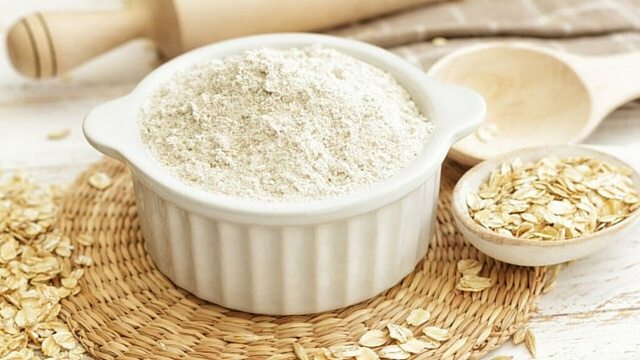
Cooking Tips: Oat flour used alone in a recipe will typically leave your baked goods with a dense or gummy texture. For this reason, it’s generally better to replace about 1/3 of a recipe’s wheat flour with oat flour. The remaining wheat flour can be replaced with a combination of other gluten-free flours (like the ones mentioned on this list). Check out some of the following recipes for ideas on how to bake with oat flour.
Recipes:
- Banana Oat Greek Yogurt Muffins
- Oat Flour Pizza Crust
- Oat Waffles
- Dark Chocolate Peanut Butter Oat Flour Brownies
5) Quinoa Flour
What Is It: Quinoa flour is another great option for cooking gluten-free pastries. It’s made from toasted and ground up quinoa. You can easily make your own quinoa flour at home. Check out the following video for a quick tutorial.
The Health Benefits: This is one of the most nutritious flours out there! You can use the superfood quinoa to boost the protein value of your baked goods since it’s a wonderful source of complete protein, providing all of the essential amino acids.
Cooking Tips: In cakes, cookies, or other pastry recipes, you can substitute half of the recommended amount of flour for quinoa flour. It’s not usually recommended to fully replace all-purpose grain flour with quinoa flour since it may make your baked goods crumble and fall apart. If you are going to blend quinoa flour with another gluten-free flour, a good option would be rice flour, which I will talk about in just a minute.
Recipes:
6) Rice Flour
What Is It: Rice flour is made from ground up raw rice and is extremely versatile. You can either use it to thicken soups or bake a batch of muffins. There are two types of rice flour – white rice flour and brown rice flour.
The Health Benefits: Rice flour is high in protein. It’s also high in fiber, making it easy for many people to digest.
Cooking Tips: While traditional all-purpose flour and rice flour act pretty similarly, it’s not recommended to fully substitute wheat flour for rice flour when baking. Instead, replace up to 1/4 of wheat flour with rice flour in baked goods. To make your blend fully gluten-free, combine with other gluten-free flour alternatives (like the ones I’ve mentioned in this article).
If you are using rice flour to make chicken tenders or thicken a soup, there is no need to combine it with another gluten-free alternative.
Recipes:
7) Chia Seed Flour
What Is It: Chia seed flour is simply made from ground up chia seeds. You can easily make your own by putting chia seeds into a coffee grinder or blender and pulsing until they’re finely ground. This type of flour is great for thickening soups and stews or you can swap out traditional all-purpose flour for this superfood meal.
The Health Benefits: Chia seeds may be small, but they pack a powerful nutritional punch. They’re rich in protein, Omega-3 fatty acids, and antioxidants. They also contain numerous vitamins and minerals important for your overall health. Chia seeds are known to boost energy, fight inflammation, support heart health and lower blood pressure.
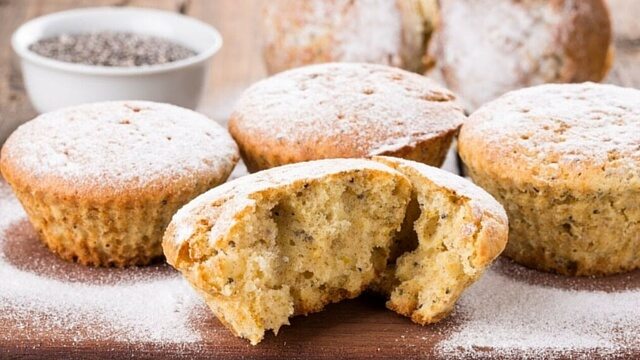
Cooking Tips: Unlike many of the other gluten-free flours mentioned on this list, you can use chia seed flour in a wide variety of gluten-free recipes as a 1:1 replacement for wheat flour. Here is a general rule of thumb: If you’re using chia seed flour in a thick dough then you can substitute the chia flour in equal parts. If you’re using it in a thinner batter or dough, though, it’s better to mix one part chia seed flour with three parts gluten-free all-purpose flour.
Also, when baking with chia seeds you will need to increase the cooking time by about 5%. You may need to increase the amount of liquid added to a recipe as well (depending on the recipe).
Recipes:
8) Buckwheat Flour
What Is It: Despite what its name implies, buckwheat is not a form of wheat. Rather, it’s related to rhubarb. To create buckwheat flour, small seeds are ground up. This type of flour has a rich, nutty flavor that’s great for baking muffins, bread, and crackers!
The Health Benefits: Buckwheat flour is high in calcium, protein, and fiber. Fiber is great for digestive health. Plus, studies show it helps slow down the rate of glucose absorption after eating a meal.
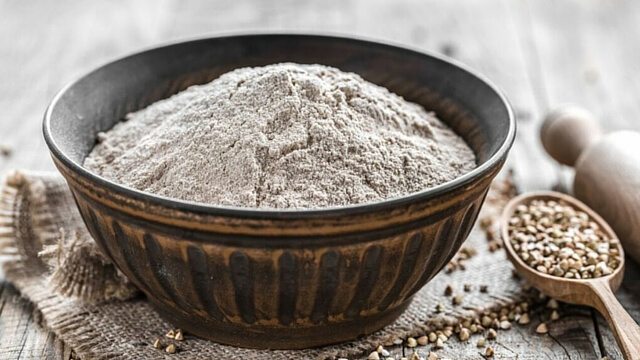
Cooking Tips: Since buckwheat flour has a fairly strong, bitter flavor, it can easily overwhelm a recipe. If you are looking to add buckwheat flour to a recipe, make sure the flavor will complement whatever it is you’re trying to bake. Additionally, it’s recommended to blend buckwheat flour with another gluten-free flour. For example, if a recipe calls for 1 cup of all-purpose wheat flour, you can easily replace it with a 1/2 cup of buckwheat flour and a 1/2 cup of gluten-free all-purpose flour.
Recipes:
9) Chickpea Flour
What Is It: Chickpea flour is made from ground-up chickpeas that are either raw or roasted. With a subtle flavor and great texture, this type of flour is extremely versatile. You can use it in crackers, cookies, and other pastries.
The Health Benefits: Chickpea flour is a great source of protein (about 21 grams in just one cup), fiber, iron, and essential vitamins. It also has fewer calories and carbs than traditional all-purpose flour.
Cooking Tips: Like most of the other flours on this list, it’s best to mix chickpea flour with other gluten-free flours. You may also need to adjust how much liquid is added to a particular recipe. To avoid beginner frustrations, try following a recipe that already calls for chickpea flour. Once you are used to working with it, then start playing around and making your own gluten-free snack/dessert creations. Check out the following recipes to get a feel for how you can bake with chickpea flour.
Recipes:
- Dukkah Chickpea Crackers
- Chickpea Flour Quiches
- Chickpea Flour Pizza Crust
- Chickpea Gingersnap Cookies
Where To Find These Gluten-Free Flours

Some of the most commonly used gluten-free flours (like coconut flour and almond flour) should be stocked on the shelves of your local grocery store. If you can’t find them there, though, don’t worry. A trip to your local health food store should allow you to stock up on all of these gluten-free flour alternatives!
If you prefer to shop from the comforts of your own home, the manufacturer Bob’s Red Mill has a wonderful reputation for using organic ingredients to create their gluten-free flours. Plus, they’re very reasonably priced.
Happy Baking!



